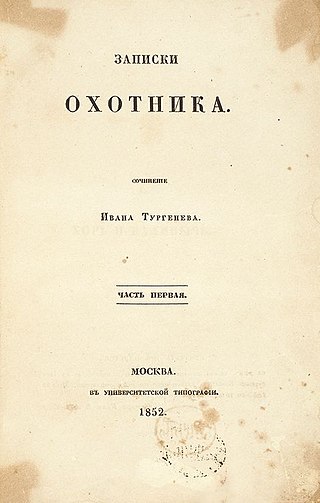| Author | Edward Bellamy |
|---|---|
| Country | United States |
| Language | English |
| Genre | short story |
Publication date | Feb. 1889 |
| Pages | 14 pp |
To Whom This May Come is an 1889 short story by American author Edward Bellamy. The story was first published in the February 1889 issue of Harper's New Monthly Magazine.
The themes of the story are telepathy and utopian society. The narrator travels on a ship that breaks apart leaving him as the sole survivor. He is stranded on a remote island inhabited by a people with the ability to read minds. This special skill, which has evolved, has alleviated many of the fears and anxieties that afflict modern life in the rest of the world, such as lies, crimes, and problems with relationships. The narrator eventually is rescued and returns to the U.S. where he reveals his experiences.

"The Tell-Tale Heart" is a short story by American writer Edgar Allan Poe, first published in 1843. It is related by an unnamed narrator who endeavors to convince the reader of the narrator's sanity while simultaneously describing a murder the narrator committed. The victim was an old man with a filmy pale blue "vulture-eye", as the narrator calls it. The narrator emphasizes the careful calculation of the murder, attempting the perfect crime, complete with dismembering the body in the bathtub and hiding it under the floorboards. Ultimately, the narrator's actions result in hearing a thumping sound, which the narrator interprets as the dead man's beating heart.
"Bartleby, the Scrivener: A Story of Wall Street" is a short story by the American writer Herman Melville, first serialized anonymously in two parts in the November and December 1853 issues of Putnam's Magazine and reprinted with minor textual alterations in his The Piazza Tales in 1856. In the story, a Wall Street lawyer hires a new clerk who, after an initial bout of hard work, refuses to make copies or do any other task required of him, refusing with the words "I would prefer not to."
Narration is the use of a written or spoken commentary to convey a story to an audience. Narration is conveyed by a narrator: a specific person, or unspecified literary voice, developed by the creator of the story to deliver information to the audience, particularly about the plot: the series of events. Narration is a required element of all written stories, presenting the story in its entirety. However, narration is merely optional in most other storytelling formats, such as films, plays, television shows, and video games, in which the story can be conveyed through other means, like dialogue between characters or visual action.
A frame story is a literary technique that serves as a companion piece to a story within a story, where an introductory or main narrative sets the stage either for a more emphasized second narrative or for a set of shorter stories. The frame story leads readers from a first story into one or more other stories within it. The frame story may also be used to inform readers about aspects of the secondary narrative(s) that may otherwise be hard to understand. This should not be confused with narrative structure.

A Sportsman's Sketches is an 1852 cycle of short stories by Ivan Turgenev. It was the first major writing that gained him recognition.
"The Aleph" is a short story by the Argentine writer and poet Jorge Luis Borges. First published in September 1945, it was reprinted in the short story collection, The Aleph and Other Stories, in 1949, and revised by the author in 1974.

Sylvie and Bruno, first published in 1889, and its second volume Sylvie and Bruno Concluded published in 1893, form the last novel by Lewis Carroll published during his lifetime. Both volumes were illustrated by Harry Furniss.
Fiction writing is the composition of non-factual prose texts. Fictional writing often is produced as a story meant to entertain or convey an author's point of view. The result of this may be a short story, novel, novella, screenplay, or drama, which are all types of fictional writing styles. Different types of authors practice fictional writing, including novelists, playwrights, short story writers, radio dramatists and screenwriters.

"White Nights" is a short story by Fyodor Dostoevsky, originally published in 1848, early in the writer's career.

A Good Scent from a Strange Mountain is a 1992 collection of short stories by Robert Olen Butler. It received the Pulitzer Prize for Fiction in 1993.
"A Gentle Creature", sometimes also translated as "The Meek One", is a short story by Fyodor Dostoyevsky written in November 1876. The piece comes with the subtitle of "A Fantastic Story", and it chronicles the relationship between a pawnbroker and a girl that frequents his shop. The story was inspired by a news report that Dostoyevsky read in April 1876 about the suicide of a seamstress. Dostoyevsky referred to it as a "meek suicide" that "keeps haunting you for a long time."

Betrachtung is a collection of eighteen short stories by Franz Kafka written between 1904 and 1912. It was Kafka's first published book, printed at the end of 1912 in the Rowohlt Verlag on an initiative by Kurt Wolff.

Robbery Under Arms is a bushranger novel by Thomas Alexander Browne, published under his pen name Rolf Boldrewood. It was first published in serialised form by The Sydney Mail between July 1882 and August 1883, then in three volumes in London in 1888. It was abridged into a single volume in 1889 as part of Macmillan's one-volume Colonial Library series and has not been out of print since.

In Black and White is a collection of eight short stories by Rudyard Kipling which was first published in a booklet of 108 pages as no. 3 of A H Wheeler & Co.’s Indian Railway Library in 1888. It was subsequently published in a book along with nos 1 and 2, Soldiers Three (1888) and The Story of the Gadsbys, as Soldiers Three (1899). The characters about whom the stories are concerned are native Indians, rather than the British for writing about whom Kipling may be better known; four of the stories are narrated by the Indians, and four by an observant wise English journalist. The stories are:

Fight Club is a 1996 novel by Chuck Palahniuk. It follows the experiences of an unnamed protagonist struggling with insomnia. Inspired by his doctor's exasperated remark that insomnia is not suffering, the protagonist finds relief by impersonating a seriously ill person in several support groups. Then he meets a mysterious man named Tyler Durden and establishes an underground fighting club as radical psychotherapy.

The War of the Worlds is a science fiction novel by English author H. G. Wells, written between 1895 and 1897, first serialised in 1897 by Pearson's Magazine in the UK and by Cosmopolitan magazine in the US. The novel's first appearance in hardcover was in 1898 from publisher William Heinemann of London. It is one of the earliest stories to detail a conflict between mankind and an extra-terrestrial race. The novel is the first-person narrative of both an unnamed protagonist in Surrey and of his younger brother in London as southern England is invaded by Martians. The novel is one of the most commented-on works in the science fiction canon.
The Amazon is a short novel by Nikolai Leskov, first published in the April 1866 issue of Otechestvennye Zapiski, with a dedication to the artist Mikhail Mikeshin. It was included into the collection Novelets, Sketches and Stories by M.Stebnitsky and later into the Works by N.S. Leskov (1889), in a slightly revised version. The epigraph, "The whole of my life has been a set of lessons, of which my death is but another one," comes from the lyrical drama Lucius (Люций) by Apollon Maykov.

Graziella is an 1852 novel by the French author Alphonse de Lamartine. It tells of a young French man who falls for a fisherman's granddaughter – the eponymous Graziella – during a trip to Naples, Italy; they are separated when he must return to France, and she soon dies. Based on the author's experiences with a tobacco-leaf folder while in Naples in the early 1810s, Graziella was first written as a journal and intended to serve as commentary for Lamartine's poem "Le Premier Regret".

The Mixture as Before is a collection of 10 short stories by the British writer W. Somerset Maugham, first published by William Heinemann in 1940.
Knulp is a short story by Hermann Hesse, published in 1915 by S. Fischer Verlag. The three stories about a vagrant that Hesse wrote between 1907 and 1914 are among his “Garbersau” stories.